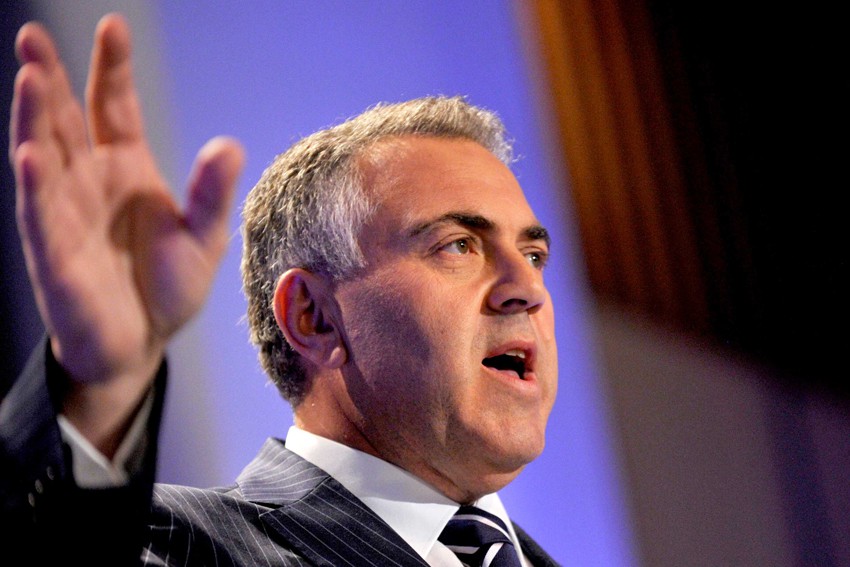Joe Hockey: Treasury or Trickery?

In the move to a budget surplus, how much is Joe Hockey’s prowess as Treasurer and how much is trickery?
In the move to a budget surplus, how much is Joe Hockey’s prowess as Treasurer and how much is trickery? The Abbott government’s chances of re-election in 2016 will be driven by the budget next year. On 12 May 2015, Treasurer Joe Hockey will deliver his second budget and in doing so, he will announce that the budget is back on track, the Labor mess has been cleaned up and that for 2016-17 and beyond, there will be budget surpluses. The 2016-17 surplus will be the result of the unwinding of the disingenuous forecasts and spending distortions that were contained in Mr Hockey’s Mid-Year Economic and Fiscal Outlook document, released in December 2013, plus some fiscal policy tightening that will start with this year’s budget on May 13. In delivering the surplus in next year’s budget, Mr Hockey will have created the political calling card for the Coalition’s 2016 election campaign. It will use the budget surplus as its self-assessed benchmark of competent economic management. It will be an oft-repeated catch phrase from the Coalition between May 2015 and whenever the election is held in the latter part of 2016 that “we got the budget back in the black and that the long hard task of paying off Labor’s debt has begun”, or words to that effect. It is likely to be a winning strategy, given the poor understanding of economic matters in much of the electorate. The move to a budget surplus will be a very straightforward process. It will make Mr Hockey look like a fiscal hero, even if the surpluses he will be trumpeting owe little to his fundamental policy prowess and more to political trickery. The current starting point for the 2016-17 budget bottom line presented in last month’s MYEFO is a budget deficit of $17.7 billion. This seems a large amount but it is just 1 percent of GDP. The first step in moving from a $17 billion deficit to a surplus number is the reversal of some of the smoke, mirrors and accounting measures presented in the MYEFO. One important step will be the payment of dividends from the Reserve Bank of Australia to the government as it gives back part of the $8.8 billion that Mr Hockey unnecessarily gave the Bank this year. Further, with the Australian dollar low and interest rates rising, the RBA has more than enough money in reserves that a strong lift in its profits will see it start to give some of the excess cash back. If history is any guide, the RBA dividend in 2016-17 should be around $4 to $5 billion. That’s a nice instalment on the road to surplus. Another critical element will be the fact that MYEFO presented an unrealistically down beat view of the economy over the three years to 2016-17 which in budgeting terms slices about $10 billion from the budget bottom line in 2016-17 alone. The level of nominal GDP will be higher, inflation will be higher and the unemployment rate lower than the MYEFO projections, all of which means that even a do-nothing policy approach will see the government pocket at least $10 billion. A stronger upswing will of course mean even more revenue. Next year, when Treasury plug in an even slight upgrade to the forecasts based on stronger hard data for the economy and the forecasts for 2016-17 are fine-tuned, the budget spreadsheet will be at least $10 billion better off than the numbers presented in the 2013 MYEFO. Such is the petty nature of the budget problem that on these two issues alone, the budget deficit for 2016-17 is all but gone. Then of course there are the policy decisions that will be taken between now and May 2015, most of which are likely to involve cuts to spending and measures to raise revenue. If the government tightens fiscal policy by even 0.5 percent of GDP (which is small beer in the scheme of budgeting), there will be an extra $8 billion or so for the bottom line which means a surplus of at least $5 billion. A tougher fiscal stance and the surplus could be near $10 billion. While there are many risks to economic forecasts and anticipating election issues, the stars are aligning for a quick and quite dramatic return to budget surplus. It is important to note here is that this profile will parlay into the forward estimates so that for every year in the so-called out years through to 2025-26, there will be budget surpluses and a profile where net government debt is eliminated. Mr Hockey knows this good news awaits him, but he will continue to play it tough, at least until the start of 2015. For the budget in three months’ time, Treasury is likely to err on the downside in terms of its economic forecasts and we will see some significant fiscal tightening, but not enough to return to surplus in 2016-17. That rabbit out of the hat is for next year’s budget. Stephen Koukoulas is Managing Director of Market Economics. marketeconomics.com.au Image courtesy of abc.net.au